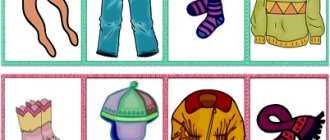- The main problems of taking pills in an autistic person
- Methods for teaching a child with autism to take pills
- Mistakes when teaching pills to an autistic child
Swallowing pills with water may seem commonplace to us, but for people with autism spectrum disorder, it is a skill that needs to be developed, otherwise the right medication will not be given. Many autism parents are faced with a refusal to swallow a pill, regardless of its size, taste and smell, so they resort to various tricks: crushing the medicine, adding it to food, diluting it with juice, etc. These are good ways to do it once or twice. It is still undesirable to give tablets in this way on an ongoing basis, since they have a number of disadvantages. To find out how to teach an autistic person to swallow pills, it is best to turn to applied behavior analysis methods. Here procedures of systematic desensitization, gradual increase in demands, modeling and reinforcement of positive behavior will come to the rescue. If a child has serious health problems, difficulties with swallowing or behavior, then he will need the help of a behavioral specialist to conduct a thorough analysis of behavior and create an individual program for correcting existing problems.
A complex physiological process or how to teach a child to swallow pills
During a child’s illness, therapy problems are added to the worry about his well-being.
Children are not always ready to take medications, and it often takes a lot of effort and time to persuade them to do so.
There are several tips for parents on how to teach their child to swallow pills. After all, the pediatrician places responsibility on the parents for carrying out a successful therapeutic regimen prescribed by the doctor.
Features of the swallowing process
This is a complex physiological process because the pharynx is involved not only in swallowing, but also in breathing.
It is a complex reflex muscular act in which food is transferred through the pharynx into the esophagus.
This is done through alternate contraction and relaxation of muscles.
This process is divided into three phases:
- Oral – controlled by consciousness, being voluntary. Chewed food moistened with saliva forms a slippery lump of food - a bolus. In the process of movement of the tongue and cheeks, it moves to the back of the tongue, during the contraction of which food is pressed against the hard palate and moves to its root, beyond the palatoglossal arches.
- Pharyngeal - fast and involuntary, it is not controlled by consciousness. Irritation of the receptors in the root of the tongue leads to contraction of the muscles that elevate the soft palate. It closes the connection between the pharynx and the nasal cavity to prevent food from being thrown into it. The bolus of food is pushed into the throat by movements of the tongue. This causes contraction of the muscles that displace the hyoid bone and elevate the larynx. Food does not enter the airways due to the fact that they are blocked by the epiglottis. Increased pressure in the oral cavity and decreased pressure in the pharynx contributes to the movement of the lump into the pharynx. The raised root of the tongue and the palatoglossal arches, which fit tightly to the palate, prevent food from being thrown back into the oral cavity.
When a bolus of food enters the pharynx, the longitudinal levator muscles lift the pharynx upward.
The compressor muscles alternately, from upper to lower, contract and push the lump towards the esophagus.
The upper esophageal sphincter remains closed when there is no swallowing.
As a result of increased pressure during swallowing, it opens and the bolus of food enters the beginning of the esophagus.
The first two phases of swallowing are short - about one second.
- Esophageal – long-lasting and involuntary. It lasts 1-2 seconds when liquid enters the esophagus and 8-9 when solid food enters.
At the moment when a swallow occurs, the esophagus is pulled towards the pharynx and the upper esophageal sphincter dilates to accept the bolus. The contractile ring-shaped muscles of the esophagus contract and move the food bolus towards the stomach.
The lower esophageal sphincter is located at the border of the esophagus and the stomach. It limits the entry of aggressive stomach contents into the esophagus. The bolus of food, having reached this border, enters the stomach due to the relaxation of the lower esophageal sphincter.
The pharyngeal phase cannot be performed if there is no food or liquid in the oral cavity. It is impossible to stop swallowing, which began due to irritation of the receptors of the root of the tongue.
Reasons for the absence of somatic swallowing
Somatic swallowing replaces infantile swallowing, which is normally observed in children under 2 years of age. Teething leads to a change in the type of swallowing.
In the infantile type, the tongue is inserted between the toothless jaws until it touches the lips at the moment of swallowing. In this case, the tongue does not rest against the hard palate.
There are a number of reasons that cause the absence of somatic swallowing:
- Lack of solid food in the baby's diet. If a child does not stop eating exclusively liquid food after the appearance of teeth, the swallowing function does not become the main one. This will cause a lack of somatic swallowing.
- A short frenulum of the tongue, which prevents its adherence to the hard palate.
- In chronic otolaryngological processes, mouth breathing predominates. It promotes the anterior location of the tongue and the transition to the somatic type of swallowing.
- With teething, the sucking function fades into the background. It is replaced by the chewing function. When using a pacifier for more than one year, the chewing function is inhibited, which can also lead to a lack of somatic swallowing.
- Using a pacifier that is too long or has a large hole.
- When baby teeth erupt 3 months later than the physiological norm.
Infantile swallowing leads to problems with bite. To correct the situation, it is necessary to eliminate all factors that interfere with the development of somatic swallowing. If the situation does not change, you should contact a speech therapist who will select an individual set of exercises.
Before starting training, a favorable environment for the child should be created.
Explain all the benefits of swallowing tablets and capsules without chewing.
You should start learning from the age of 3.5 years, when you can come to an agreement with the child and listen to his concerns and fears.
Training is carried out when the child is not sick. A healthy baby in a good mood and without a sore throat will make it easier to achieve results. For example, you can use vitamins, but do not give more than 1-2 pieces per lesson, otherwise the child will get the idea that he can drink vitamin tablets as much as he wants.
- You should show your child by example how to take pills.
- Explain that the tablets are taken only with water.
- Tell that it is correct to place the tablet not close to the root of the tongue, so as not to provoke a gag reflex. It is better to use simple and short phrases: “Take the tablet and with the other hand a glass of water. Place the tablet on your tongue, drink it and swallow.”
- Explain that it is better to swallow the tablets without chewing: “This way the taste will not be felt, and the tablet will dissolve in the stomach, fighting the disease.”
- Give your child the opportunity to choose when to take the medicine if the instructions do not clearly indicate this.
- The opportunity to hug your favorite toy gives your child peace and comfort.
- There is no need to worry, this will be passed on to the baby, which will not contribute to successful learning.
- To prevent uncontrolled use of medications and poisoning, it is necessary to explain to the child that he can only take those pills that are given by his parents or doctor. Convey to the child that it is forbidden to take and swallow medications without permission.
- Tell your child what pills are that can help you get better, but there are also pills that can make you sick if you take them incorrectly or without permission.
- Do not try to force your child to take medicine. This is ineffective and dangerous. The child may choke on the tablet or water. He might vomit. This approach will give taking medications a negative connotation, which will subsequently lead to the child’s reluctance to take medications.
- You need to talk to the child and explain to him that this was necessary for his health. Offer a sweet treat for taking a bad-tasting pill. Parents should be cunning, but not deceive their child. If he loses trust, it will never be possible to convince him that the pill is not bitter, even if you say it sincerely.
- If successful, reward the child with a small toy or sweets and verbal praise.
You need to watch the child. If he can't swallow a pill, it's easy to notice. This may be due to an overactive gag reflex or chronic vomiting. Previous negative experiences with medications may also hinder learning.
To summarize, I would like to note that the most important thing is to create a favorable environment during the learning process. You must be patient. Every child is different and needs different amounts of time to learn to swallow pills.
It is enough to spend 10-20 minutes a day studying with your child, talking to him, listening to his worries about taking medications. If you follow these simple rules, success will not keep you waiting.
No comments yet
momjournal.ru
How to teach a child to swallow tablets and capsules: tips for mothers
During the period of illness, other problems are added to the parents’ worries about the child’s well-being. Children are not always ready to take medications. It takes a lot of time and effort to persuade them to do this. How to teach a child to swallow pills?
How to give medications correctly
Every parent is faced with the question of how to give pills to a child aged 0 to 5 years. This may be needed in the treatment of cough, vomiting and other diseases.
How to teach a child to swallow pills? Drugs such as Ambroxol, Ampicillin, Paracetamol cause a lot of negative emotions on the part of the baby when taken. However, you need to give pills, so there are tips for parents on how to do it correctly.
Before your child takes the medicine, it is necessary to study its instructions. Parents should know the contraindications and side effects of the drug in order to be on guard. The mother should explain to the baby in understandable language why this or that pill is needed. All children are inquisitive, so by satisfying their interest, you can achieve consent to take the medicine.
You can make a real game out of the treatment process. Parents should strain their imagination and come up with a fairy tale about insidious microbes that offend the baby’s body. But the good fairies in the form of tablets fight them.
Many parents have heard the saying that in order not to harm the gastric mucosa, you need to take the pills with milk. Despite this, doctors insist that only water should be used to take tablets, mixtures and syrups. In extreme cases, if the medicine is very bitter, then sweet tea at room temperature.
How to teach to swallow pills
There are a number of tips that will make this difficult process easier. Education begins at the age of 3–3.5 years. At this time, parents can already come to an agreement with the baby, explain to him the need for treatment, and also listen to his fears and concerns.
Oddly enough, many experts advise training when the child is completely healthy. If he is in a good mood and does not have a sore throat, he will fulfill his parents’ request without difficulty. You can use small vitamins as substitutes for real capsules.
When can a child be taught to swallow pills? The first medications in his life should not be large. The learning process begins at the age of 3:
- Parents need to set an example so that the child repeats after them. It should be explained that the tablets should be taken only with water.
- The mother must teach the child to place it correctly on the tongue. Place the tablet far on the tongue, but not too close to the root, so as not to cause a gagging effect. The same applies to capsules.
- Mothers should explain to children how to swallow pills without tasting them. To do this, they do not need to be chewed.
How to teach a child to swallow pills? Pediatricians advise adhering to the above recommendations. They will help parents cope with this problem.
If the baby succeeds, then you need to praise him. You can reward him with something tasty and tell all relatives that the child has grown big and treating him will not be difficult.
It is imperative to tell your child that he can only take the pills that his parents or grandmother give him. Doing this without permission is prohibited.
If the tablets are large
How to teach a child to swallow pills whole? Many mothers are very worried in this case. Of course, it is best not to divide them into parts unless the dosage requires it. Parents should not worry, because all their negative emotions are passed on to their children. When washed down with water, the tablet will go where it is needed.
If the child initially fails to swallow a tablet, especially a large one, then parents should not despair. To prevent him from vomiting, you can crush it into powder and combine it with water. Then carefully give it to the baby using a syringe.
If the tablet is bitter, then it should be poured closer to the root of the tongue. This will reduce the unpleasant taste of the medicine and also work the swallowing reflex.
How to negotiate with a child
How to teach a child to swallow pills? For the process to go smoothly, you need to come to an agreement with the baby. This method is not particularly understandable for toddlers under one year old, but it is useful for older children. Some psychologists say that even a two-year-old child can understand that he needs a pill when he has a tummy ache.
Many parents try to forcefully give medicine to their baby. This method is not always effective, because the baby may choke on water, choke on a pill, or vomit. Therefore, experts insist on positive motivation for the baby.
It is best not to force your child to take the medicine he needs; it is much more effective to reach an agreement with him. This requires a favorable environment; parents should not be nervous.
The child is explained in a clear manner that he needs to take the pill in order to get better. After a tasteless medicine, mom can offer him a tasty reward.
It is best to negotiate with your child rather than deceive him. You should not say that the pill is not bitter, otherwise he will stop trusting his parents.
When all the arguments are exhausted
How to teach a child to swallow pills? When the baby refuses to take capsules and other tablets and it is impossible to come to an agreement with him, parents should not despair. After all, bad things come to an end.
Some parents resort to tricks. At the pharmacy they purchase special glazed capsules into which they place real tablets. Thanks to this, the medicine is easy and simple to swallow. This method is suitable for children over 3 years old.
And for infants, it is best to mix the crushed tablet in a spoon with something sweet that he is allowed to drink. For young children, it is best to take the medicine in syrup form. However, situations arise when certain drugs are not available in liquid form, especially for children.
Advice from a famous pediatrician
How to teach a child to swallow pills whole? Komarovsky advises teaching a child when he is healthy.
Parents can demonstrate how to swallow pills by personal example.
The main thing is to explain to the child that you need to take the medicine only with water. The tablet is placed on the middle of the tongue so as not to cause a gag reflex. They should be swallowed immediately and not chewed, especially if they are bitter.
Parents should not worry when giving pills to their child. Otherwise, he will also be nervous.
It is important to explain to the child that it is necessary to take the pills that the parents give. It is prohibited to do this without the permission of adults.
In critical situations, children should understand the word “must” and not refuse to take pills. Usually kids understand that no matter how much they resist, everything will still be as it should be in this situation.
How to teach a child to swallow pills? Komarovsky considers a situation where a baby categorically refuses to take medication. To do this, you must use the following recommendations:
- due to the fact that the maximum number of taste buds are located on the tongue, it is advisable that the tablets do not get on it;
- You can advise your child to hold his nose if the capsules have an unpleasant odor;
- You can let your child suck on frozen juice, in which case the taste buds will turn off and he will be able to easily swallow the medicine.
Children really don't like being bossed around. Parents need to be smart to get the medication taken.
How to take medicine correctly
To get rid of the unpleasant taste from the pills, parents immediately give the child something to drink. It is imperative to take into account the compatibility of medications with various drinks:
- antibiotics should not be washed down with milk, their structure is destroyed and they are almost not absorbed by the body;
- It is not recommended to take tablets with tea due to the tannin and caffeine it contains;
- Antibiotics, anti-inflammatory and sedatives should not be taken with juices, since the substances contained therein completely neutralize their effect.
Therefore, it is best to take the tablets with water. This facilitates their rapid absorption by the body and will not lead to negative consequences.
Conclusion
Many parents at certain times encounter problems when trying to teach their child to swallow pills. Don't be upset even if you fail. It is important to try using different methods to achieve a positive result. Parents can use personal example or other methods. Over time, the baby will definitely learn to take medications, it’s just that some children need more time for this, and others less.
fb.ru
Advice from a famous pediatrician
How to teach a child to swallow pills whole? Komarovsky advises teaching a child when he is healthy.
Parents can demonstrate how to swallow pills by personal example.
The main thing is to explain to the child that you need to take the medicine only with water. The tablet is placed on the middle of the tongue so as not to cause a gag reflex. They should be swallowed immediately and not chewed, especially if they are bitter.
Parents should not worry when giving pills to their child. Otherwise, he will also be nervous.
It is important to explain to the child that it is necessary to take the pills that the parents give. It is prohibited to do this without the permission of adults.
How to teach a child to take medications: forcing the child to take pills
When a child is sick, the problem of treatment is added to the anxiety and worry for him. Children do not like to take medications, and sometimes it takes a lot of patience and effort to persuade them to do so.
The most common difficulty in treatment concerns taking pills. How to teach a child to swallow pills? Of course, there are a number of tips that can make this task easier for parents. After all, it is usually they who are entrusted with solving this problem.
It is better to start training at the age of 3.5 years. At this time, you can already come to an agreement with the baby. Explain things to him and listen to his fears and concerns.
Strange as it may sound, training should ideally be carried out when the baby is healthy. In a good mood and without a sore throat, he is more likely to do what you want from him. Small vitamins can be used as educational material. The first tablets in a baby’s life should not be bitter and large:
- Show your child an example, let him repeat all the actions after you. Explain that it is best to take the tablets with plain water.
- Teach your child how to place the tablet correctly on the tongue. You need to place it far away, but not too close to the root, so as not to cause a gag reflex. The same applies if you ask how to teach a child to swallow capsules.
- Explain how it is convenient to swallow tablets without tasting them, rather than chewing them. Tell them that they will dissolve in the stomach, doing everything to make the disease go away.
Many mothers ask how to teach their child to drink whole pills.
Of course, it is best not to divide them into parts unless the dosage requires it. The main thing here is for parents not to worry. After all, their worries are passed on to the child. When washed down with water, the tablet will go exactly where it is needed. Did your little one do a great job and swallow the pill? Praise him! Reward him with something tasty and tell all his relatives how old he has become and how easy it will be to treat him now.
Don’t forget to tell your baby that you can only take the pills that your mother (father, grandmother) gives him. Emphasize that there are pills that can make you well, but there are also those that (if taken incorrectly and without permission) can, on the contrary, make you sick.
How to get your child to take medicine
Many parents try to force medicine into their child.
This method is not always effective; the baby may choke on water, choke on a pill, or vomit. Therefore, experts insist on positive motivation for the baby. Of course, ideally there is no need to force the baby to take the medicine he needs, but it is much more effective to come to an agreement with him. To do this, you need to calm him down, and calm down yourself.
After that, talk to the child. Explain to him that he needs to take medicine to get well. Offer to reward him with his favorite sweet after a tasteless drug.
Be cunning, but never deceive the baby, because otherwise he will not believe you, even if you sincerely say that this pill is not bitter.
Rate the material:
thank you, your vote has been accepted
Get to know yourself
detstrana.ru
We're trying to come to an agreement
If your baby is at an age where you can negotiate with him, use this opportunity. Build your arguments in advance. Push on emotions: impressionable children give in to persuasion much more quickly. Reassure your child that he is old enough to take medications on his own without crying. Use the principle of comparison with other children who can easily take the pill. Promise your baby a long-awaited gift for his courage. It may not be entirely pedagogical to do this, but in this case the health of your son or daughter is at stake.
Remember that most modern medicines for children do not actually have an unpleasant taste and are as easy as possible to use. Stereotypes, fear and unfounded prejudices - this is what prevents a child from being treated normally with medication.
Get your child used to taking medications without problems in advance. Consult your doctor about taking multivitamins in courses, give your baby rosehip syrup or other useful supplements in different forms.
How to teach a child to swallow tablets or capsules | Exit Foundation, autism in Russia
21.11.17
Many children with autism have trouble taking medications, but it is a skill that is critical to later life and health.
Author: Mary Barbera Source: barberabehaviorconsulting.com
I am a behavior analyst and have two adult sons, one of whom has autism. I previously worked as a registered nurse for over 30 years, and I feel that my background in medicine has been very helpful in working in the autism field.
Because of my background in education and experience, I can answer questions about medications and the unique challenges that parents of children with autism often face.
When Lucas was a baby, we could give him a liquid form of children's medication by dropping it directly into his mouth. Since there was only a small amount of the drug and medicines for children are usually flavored, he usually swallowed the medicine without any problems. However, as Lucas got older, the volume of the liquid drug became much larger, and it became increasingly difficult to give him the medicine.
Lucas was a picky eater, so when he was diagnosed with autism at age 3, he was underweight. We were advised to give him a multivitamin and other nutritional supplements such as Omega-3s every day. Sometimes when he was sick, we also gave him antibiotics and other drugs to treat infections and other diseases. In addition, over the following years, he was prescribed various medications to improve sleep, reduce other problems associated with autism, as well as treat an autoimmune disease that Lucas was diagnosed with at age 6, and autonomic nervous system dysfunction that was diagnosed in adolescence.
Shortly after Lucas was diagnosed with autism, we began crushing vitamins, supplements, and prescription medications and mixing them into applesauce. After Lucas ate a spoonful of puree with medicine, we usually gave him some kind of edible reward, followed by another spoonful of puree and another reward. At times the mixture tasted disgusting, so Lucas began to resist and exhibit problematic behavior when it came time to take his medication.
When Lucas was about 5 years old, I asked a behavior analyst to watch me give my son vitamins and medications. I was looking for ideas on how to help Lucas take his medications without challenging behavior. The behavior analyst said the crushed pills give the mixture an unpleasant odor (and probably taste), and the only way to deal with the problem is to teach Lucas how to swallow pills.
Some parents mix everything with juice, but I couldn't do it because Lucas never liked juice and it's impossible to hide the taste in water. Also, in my later years as a behavior analyst, I observed that giving medications in juice is not the best option because many children drink juice very slowly, which affects the timing of the medication, and the drug may settle at the bottom of the cup, so very Often when mixing medicine with juice, parents were not sure what dose of the drug the child actually received.
Crushing tablets and mixing them with food and drinks is not an ideal solution and may not be long-term, as some drugs, such as Omega-3, have a bitter and nasty taste, while others come in capsules that cannot be opened.
I learned very early on that if a child with autism cannot swallow medications, it becomes more and more difficult to give him medications, supplements, or vitamins as he gets older.
I attended several lectures on this issue that explained how to teach pill swallowing through systematic desensitization procedures and gradual increase in demands (in this case, gradually increasing the size of the pill), as well as modeling and positive reinforcement. I was able to teach Lucas and many other children how to swallow pills.
Lucas started popping the pills when he had to take prednisone for 21 days due to a flare-up of his autoimmune disease. Lucas was 14 years old when the drug was prescribed, and looking back, I wish I had taught Lucas how to swallow pills much earlier. When the doctor prescribed prednisone, he noted that the pills had a very bad taste. The doctor warned me that if I crushed the tablet, the taste would be disgusting.
Since I told the doctor that I was giving Lucas crushed tablets in applesauce, he suggested that I just put the prednisone tablet (it's very small) in the applesauce where Lucas couldn't see it, and then just give him the tablets.
It turned out that the prednisone tablet was so small that Lucas could swallow it and not even notice. Since Lucas was used to swallowing applesauce, we began to gradually increase the size of the tablets. We also started showing him that we put the pills in the puree, and then we gave him rewards.
Now Lucas can take even larger capsules, but they still have to be pureed.
If your child is willing to take a large sip of water from an open cup, then that's where I would start the training. Then, as recommended in the lectures I attended, I would start with a small grain or the smallest noodle you can find.
Some people recommend starting with a tic-tac or other candy, but I don't think that's a good idea - after all, candy is delicious, and you don't want your child to start chewing the candy or get used to the good taste. So dry cereal, beans or small pasta are better - increase the size very gradually, and be sure to give the child a highly coveted reward immediately after he swallows the training “pill”.
With some children, you can model this skill directly: “Watch mommy take a big sip!” Then ask your child to repeat after you. Then: “Look how mom puts a grain on her tongue!” Then another sip of water. Ask your child to repeat after you and immediately provide a highly desired reward.
In addition, you can use video modeling, that is, record on video the action that the child should learn to repeat. (Also see: How to Use Video to Help Children with Autism).
If, as in Lucas's case, the puree method is more suitable for you, then prepare the puree by placing something small, such as a very small pasta or grain, in a spoon with the puree, and then give the spoon to the child, immediately providing reinforcement for that the child swallowed the puree.
Gradually increase the size of what your child swallows. Increase the size only after the child has been successful in the previous step. For example, after he has successfully swallowed a small grain three times, put in a small pasta, and then a very small bean. And, of course, at every step you must provide your child with a very important and desirable reward for success.
Once your child has learned to take pills, you can teach him other very important skills related to taking medications. For example, a child, adolescent, or adult can learn to self-administer medications from a container in which pills are pre-set daily, or to independently respond to timers or a visual schedule to take the correct medications at the scheduled times.
These are proven strategies based on applied behavior analysis that can help your child or client take their medications. However, if a child has serious medical problems, difficulty swallowing, or problematic behavior related to treatment, then he will need the help of a specialist who can conduct a thorough behavior analysis, based on which an individual program will be developed to correct these problems.
We hope you find the information on our website useful or interesting. You can support people with autism in Russia and contribute to the work of the Foundation by clicking on the “Help” button.
ABA therapy and behavior, Raising children with autism
outfund.ru











